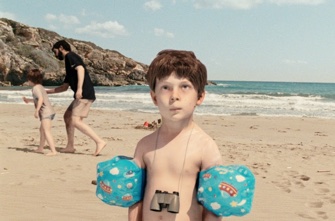
One of the many things the Centquatre cultural center has going for it is space, such a rare commodity in Paris. Artists exhibiting there have plenty of room to spread out if they so desire. In the new show, “Matérialité de l’Invisible,” several artists in residence and invited guests, including superstar Anish Kapoor, present works on the theme of making the invisible visible.
Kapoor makes good use of the space with his installation “Ascension” (2003-15), a leftover from a previous exhibition at Centquatre but highly appropriate for this one. Visitors walk up a wooden ramp that spirals upward and find themselves inside a round white structure
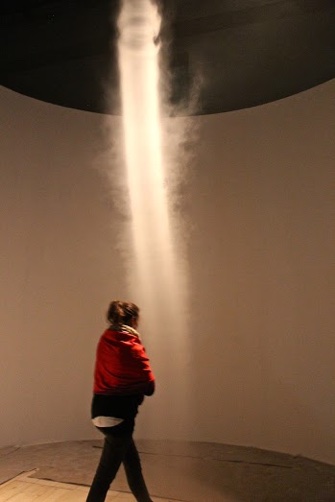
facing a mysterious beam descending from high above, calling to mind the Starship Enterprise. Mr. Spock never materializes, but strange things happen when visitors walk into the beam.
One of my favorite pieces was Ronny Trocker’s “Estate (Summer),” a photo, video and sound installation that presents beach scenes where everything moves normally – the waves come crashing in, a scoop of ice cream falls off its cone – except the humans, whose movements are frozen: a refugee eternally stuck crawls from the sea onto the beach, while a little boy with water wings and binoculars poses for a photo and others continue to play games and sunbathe. The effect is eerie and somehow spellbinding.
Miranda Creswell, one of the resident artists, presents the results of two “research” projects through varied media. One, “Putting in a Box,” dissects the history of Harlow Garden in Essex, Britain, and the Buttes Chaumont Park in Paris, a 19th-century park with manmade hills
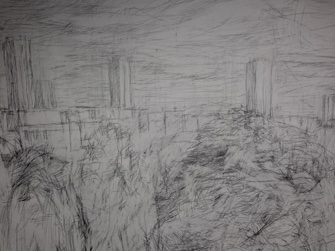
riddled with holes made by gypsum quarries. She then literally puts bits and pieces of what she has found – newspaper clippings of events that occurred there, dried plants, old postcards, her own delicate drawings – in boxes, accompanied by a couple of layered large-scale drawings of each park in different seasons and light conditions.
Some of the artists took inspiration from archaeology – one way of making the invisible visible again – for their projects. Nathalie
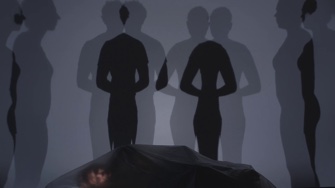
Joffre spent time on a dig on a Roman site in Dorchester, Britain, to make two videos and an installation (which memorializes her own lost computer data from part of the project) to comment on the fragmentary nature of our search to understand and preserve the past.
One of the most ambitious projects is Johann Le Guillerm’s “The Imperceptibles,” three seemingly stationary big-wheeled machines of his own making placed on rails. In fact, each one creeps forward with infinitesimal movements, ingeniously propelled by such
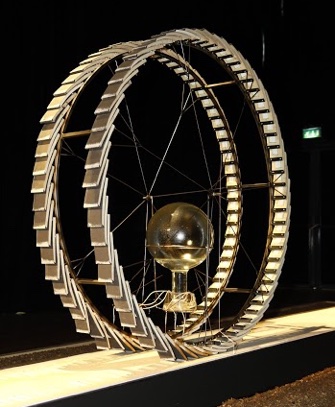
slow processes as the dripping of condensation or the swelling of chickpeas. At the end of each day of the exhibition, the short distance traveled by each machine is measured and marked on a slate at the end of its tracks. These low-tech but beautiful pieces by Le Guillerm, a self-taught artist who used to be a circus performer, make us think twice about our obsession with speed and efficiency.
The exhibition is presented in various spaces throughout the cavernous Centquatre, which is always teeming with activity and full of performers, mostly young people, practicing dance or sports routines. It would be easy to spend the whole day there, visiting the exhibition, watching the performers, eating in the café or restaurant and browsing in the Emmaüs thrift store, one of the best around with its careful selection of furniture, clothing and objects with high-level bobo appeal.
Favorite
